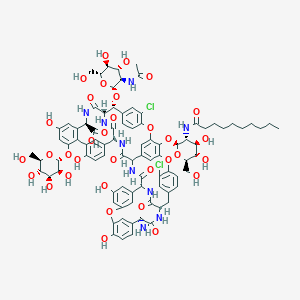Continuous ambulatory peritoneal dialysis (CAPD)-associated peritonitis
Adult: 6 mg/kg as single loading dose. Teicoplanin is added to the dialysis solution at a concentration of 20 mg/L; dose is added into each bag of solution in the 1st week, followed by alternate bags in the 2nd week and then in the overnight dwell bag in the 3rd week.
Child: ≤2 months Loading dose: 16 mg/kg via infusion on day 1. Maintenance: 8 mg/kg via infusion once daily. 2 months to 12 years Loading dose: 10 mg/kg every 12 hours for 3 doses. Maintenance: 6-10 mg/kg once daily. >12 years Same as adult dose.
Child: ≤2 months Loading dose: 16 mg/kg via infusion on day 1. Maintenance: 8 mg/kg via infusion once daily. 2 months to 12 years Loading dose: 10 mg/kg every 12 hours for 3 doses. Maintenance: 6-10 mg/kg once daily. >12 years Same as adult dose.
Oral
Clostridium difficile-associated colitis, Clostridium difficile-associated diarrhoea
Adult: 100-200 mg bid for 7-14 days.
Parenteral
Complicated skin and soft tissue infections, Complicated urinary tract infections, Pneumonia
Adult: In combination with other antibacterial: Initially, 6 mg/kg via IM inj or via IV bolus over 3-5 minutes or infused over 30 minutes every 12 hours for 3 doses. Maintenance: 6 mg/kg once daily to achieve targeted trough concentration (refer to detailed product guideline). Treatment duration is adjusted according to type and severity of infection and patient clinical response. Max: 4 months.
Child: ≤2 months Loading dose: 16 mg/kg via infusion on day 1. Maintenance: 8 mg/kg via infusion once daily. 2 months to 12 years Loading dose: 10 mg/kg via IV inj every 12 hours for 3 doses. Maintenance: 6-10 mg/kg via IV inj once daily. >12 years Same as adult dose.
Child: ≤2 months Loading dose: 16 mg/kg via infusion on day 1. Maintenance: 8 mg/kg via infusion once daily. 2 months to 12 years Loading dose: 10 mg/kg via IV inj every 12 hours for 3 doses. Maintenance: 6-10 mg/kg via IV inj once daily. >12 years Same as adult dose.
Parenteral
Bone and joint infections, Infective endocarditis
Adult: In combination with other antibacterial: Initially, 12 mg/kg via IM inj or via IV bolus over 3-5 minutes or infused over 30 minutes every 12 hours for 3-5 doses. Maintenance: 12 mg/kg once daily to achieve targeted trough concentration (refer to detailed product guideline). Treatment duration is adjusted according to type and severity of infection and patient clinical response. Max: 4 months.
Child: ≤2 months Loading dose: 16 mg/kg via infusion on day 1. Maintenance: 8 mg/kg via infusion once daily. 2 months to 12 years Loading dose: 10 mg/kg every 12 hours for 3 doses. Maintenance: 6-10 mg/kg once daily. >12 years Same as adult dose.
Child: ≤2 months Loading dose: 16 mg/kg via infusion on day 1. Maintenance: 8 mg/kg via infusion once daily. 2 months to 12 years Loading dose: 10 mg/kg every 12 hours for 3 doses. Maintenance: 6-10 mg/kg once daily. >12 years Same as adult dose.




 Sign Out
Sign Out




